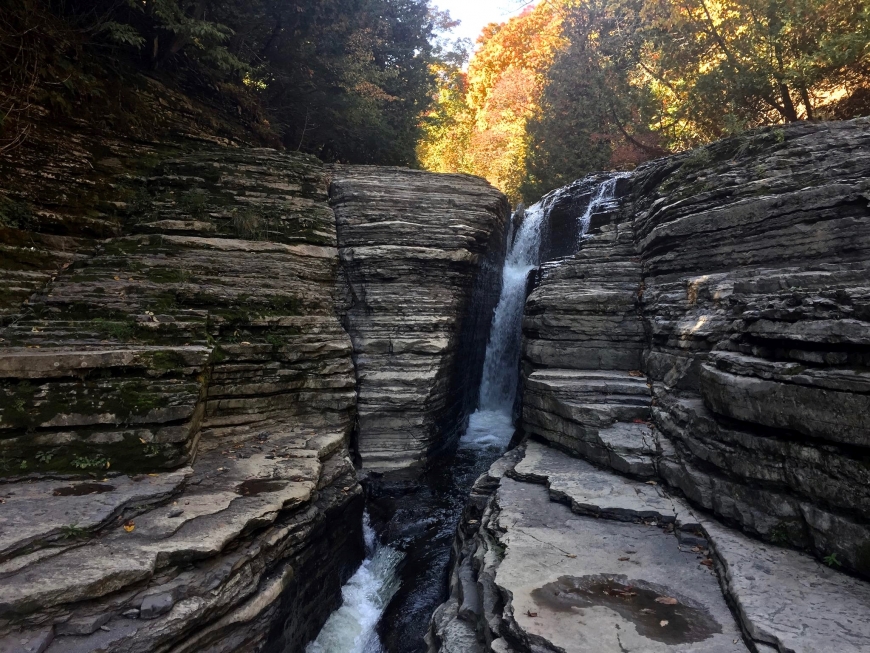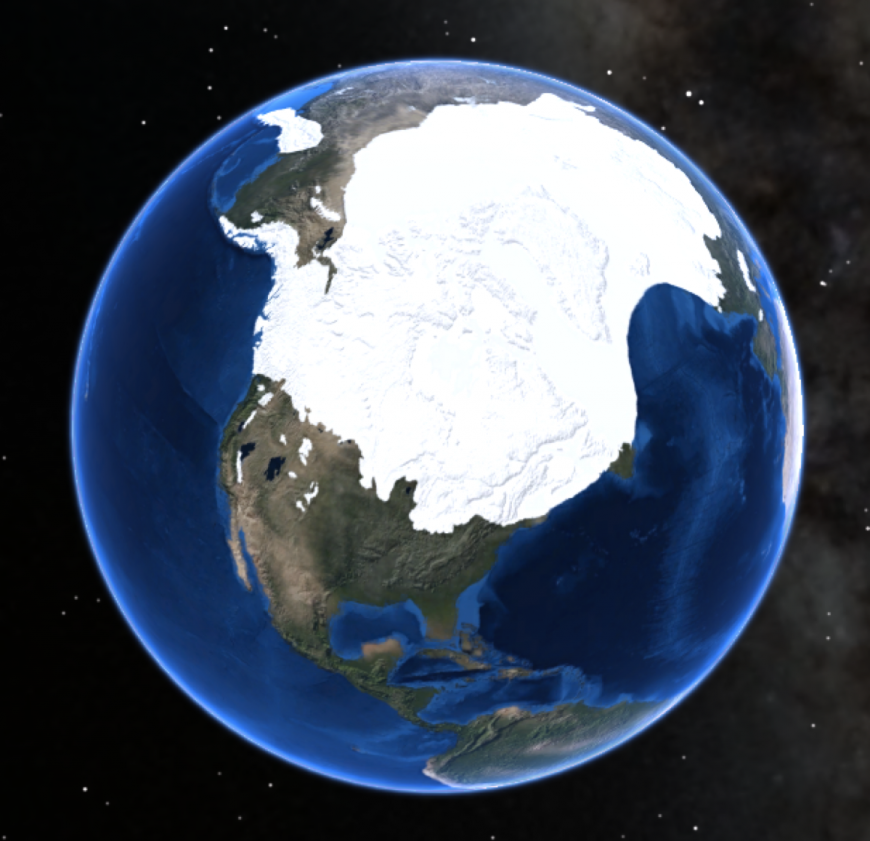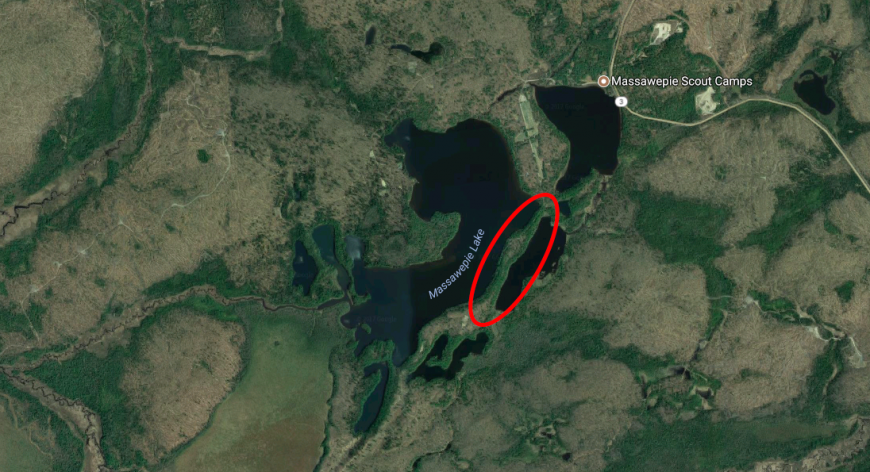


Layers of shale and limestone at Whitaker Falls. Photo: Helen Eifert
Extent of Laurentide Ice Sheet over North America. Photo: NPS Natural Resources, Creative Commons
Satellite image of Lake Massawepie showing the esker deposit. Map data: Google
Hiking along the slope of the esker at Lake Massawepie. Photo: Molly McMasters



An Introduction to Earth’s History as told by the North Country Landscape
Have you ever thought about what the earth was like millions of years ago? It’s hard to imagine the world before we were born, let alone before the human species existed. But if the history of our planet was represented by a single 24 hour day, the presence of modern humans would only be equivalent to less than 4 seconds. What do you think Earth will look like in another million years? The more we uncover about the past, the better we can understand how earth will change in the future. Secrets to Earth’s dynamic past are hidden in the landscape all around us. In northern New York, evidence of glaciation and warm continental seas are revealed in the geology, and tell a compelling story of the earth before modern humans.
When I think about the North Country, I picture the flat expanses of field and forest, intersected by rambling rivers. I see hills that transform into the Adirondack mountains, with lakes scattered at their feet. But there was a time when the North Country was occupied by a vast ocean. The climate determines whether the finite amount of water on Earth is stored in seas or ice and Earth’s climate has varied greatly over its 4.5 billion year lifetime. During warm climatic periods, little to no water was stored as ice. Therefore, sea levels were high and encroached onto land, forming shallow continental seas. 450 million years ago, much of the northeast was submerged underwater. This chapter of Earth’s story is recorded in sedimentary rocks of the region.
Sedimentary rocks are formed when individual grains of sediment accumulate and compact down over time. Characteristics and types of sedimentary rocks form under specific conditions. By identifying these characteristics in the rocks around us, we can better understand past environments. One spot with a particularly visual story is Whitaker Falls in Lowville NY. The layers of rock are comprised of limestone and black shale. Shale forms in very low energy environments, such as deep oceanic waters. An example of a high energy environment would be a river, where the smallest sediments do not get deposited because they are carried by the energy of the water. In low energy environments, you will find the finest sediments. If you look closely at the limestone layers interbedded with the shale, they contain fossil fragments. These fossils are mainly the remains of prehistoric shelled organisms that would have been deposited during storm activity, in which sediments from shallower waters were picked up and carried into deeper waters.
With each layer of black shale, imagine the calm darkness of deep seawater. Super fine sediments slowly accumulate until a major storm transforms the water into chaos. Sediments, including the remains of tiny organisms, are disrupted from the shallower water and swept into the deep dark calm, leaving behind fossils and sediments that will eventually comprise layers of limestone.
The continental sea that deposited the rock record at Whitaker Falls existed 450 million years ago, in a time when earth was much warmer than today. More recently, there have been cold climatic periods, where water was frozen in the form of ice. Earth has experienced many periods of glaciation, in which sheets of ice covered massive extents of continents. During the last glacial maximum 20,000 years ago, the Laurentide Ice Sheet covered the entirety of New York State. Imagine ice 2 kilometers thick, more than 50 times the tallest treetops above you, stretching across the North Country. As the ice receded, it left glacial lakes scattered in its wake. The smaller lakes only lasted a few thousand years and are now dried up. However, many of the bigger lakes in New York State are of glacial origin, including the Finger Lakes and the Great Lakes.
The glaciers also left a number of unique landforms, including eskers – ridges of sediment deposited by a subglacial river of meltwater. At Lake Massawepie in Piercefield NY, the road that separates Long Pond from the lake runs along the ridge of an esker. Both sides drop down steeply to the water. An esker is deposited under the glacier as meltwater diminishes and the river fills up with sediments. The resulting landform resembles a mold of the river channel under the ice. When you walk along the esker on the White Blaze Trail at Massawepie, you can visualize the size of the river channel, and imagine the magnitude of ice surrounding it. (Please note that Massawepie Scout Camps and the surrounding trails are closed to the public June – August. Trails and lake access open again on August 31.
Earth is dynamic, shifting from warm to cold climates and changing the landforms. Our North Country home has been deposited, built, and carved for millions of years prior to our experience here. Reading the landscape can tell us this story of Earth’s history, and give us comfort in its future. No matter how destructive humans will be, these powerful processes will continue long after we are gone, recycling the landscape into a new form for new life.

